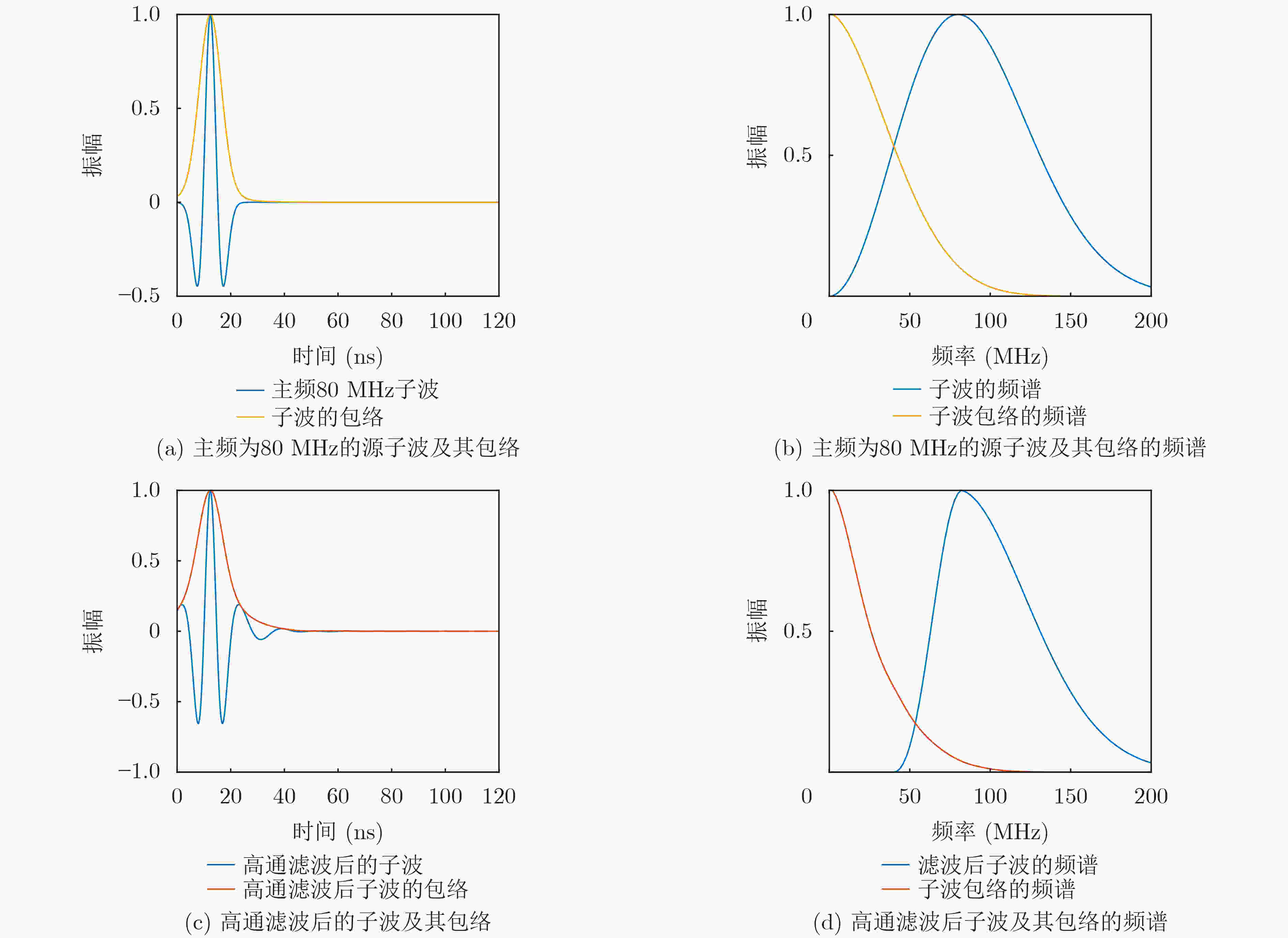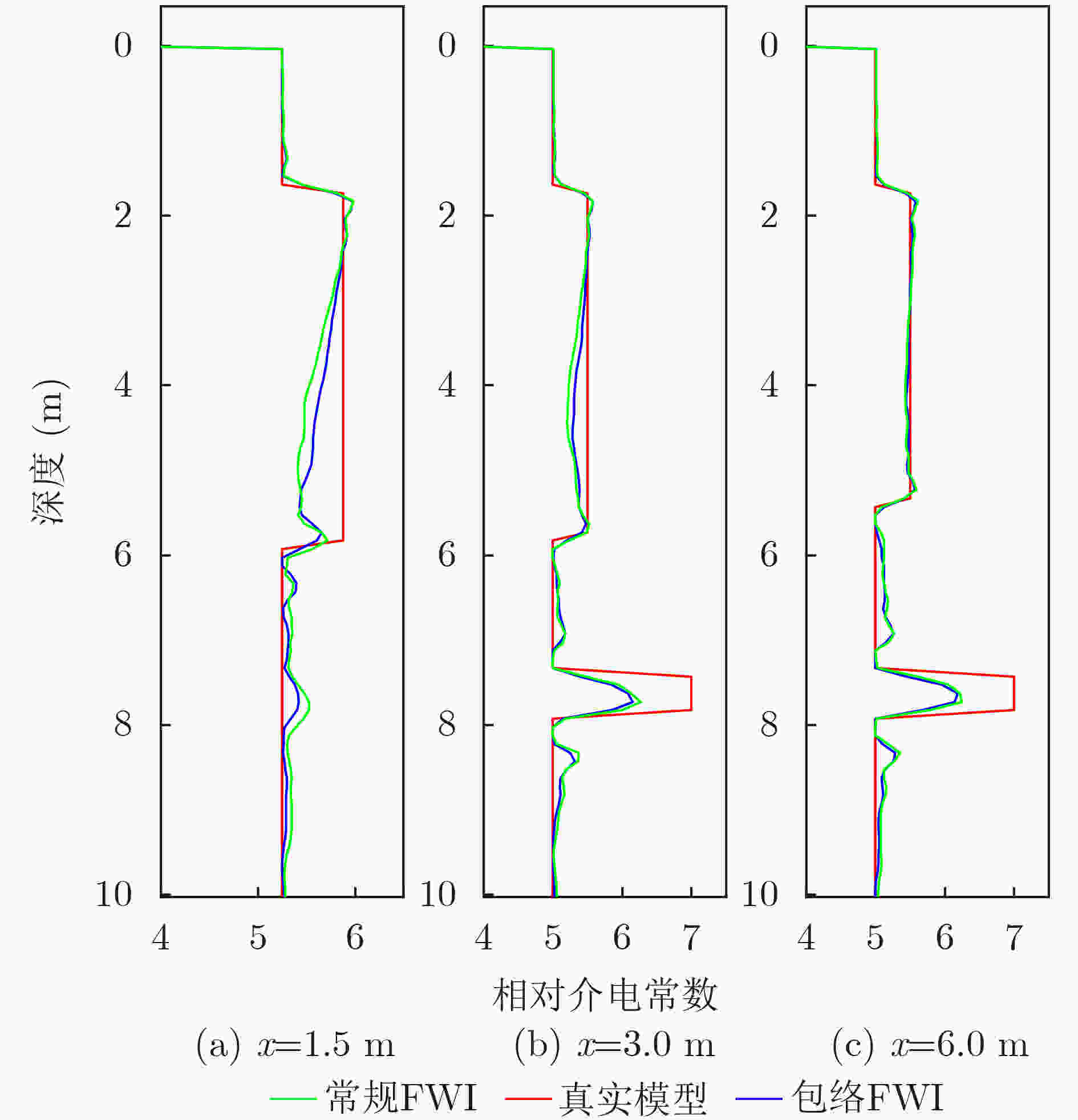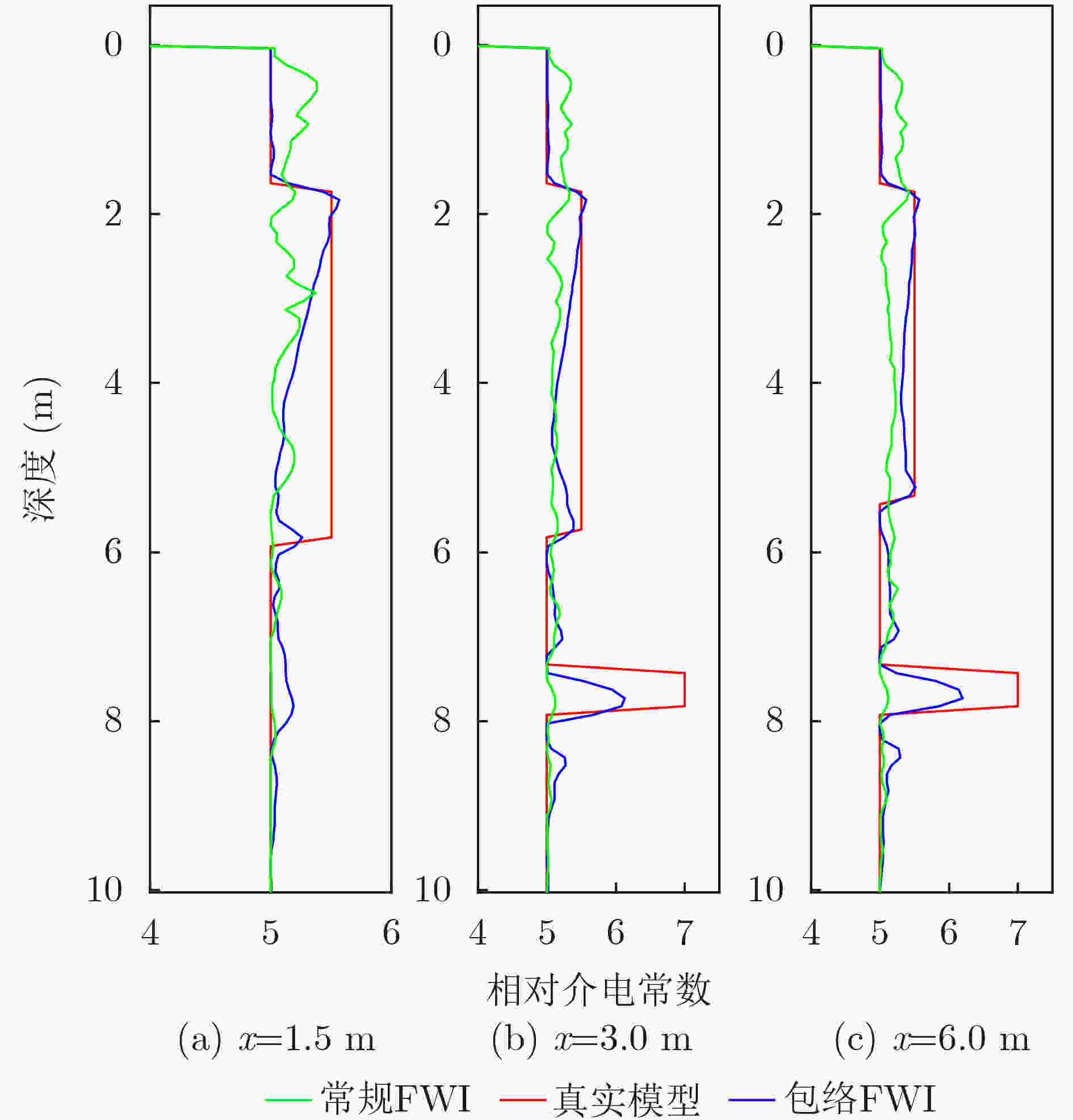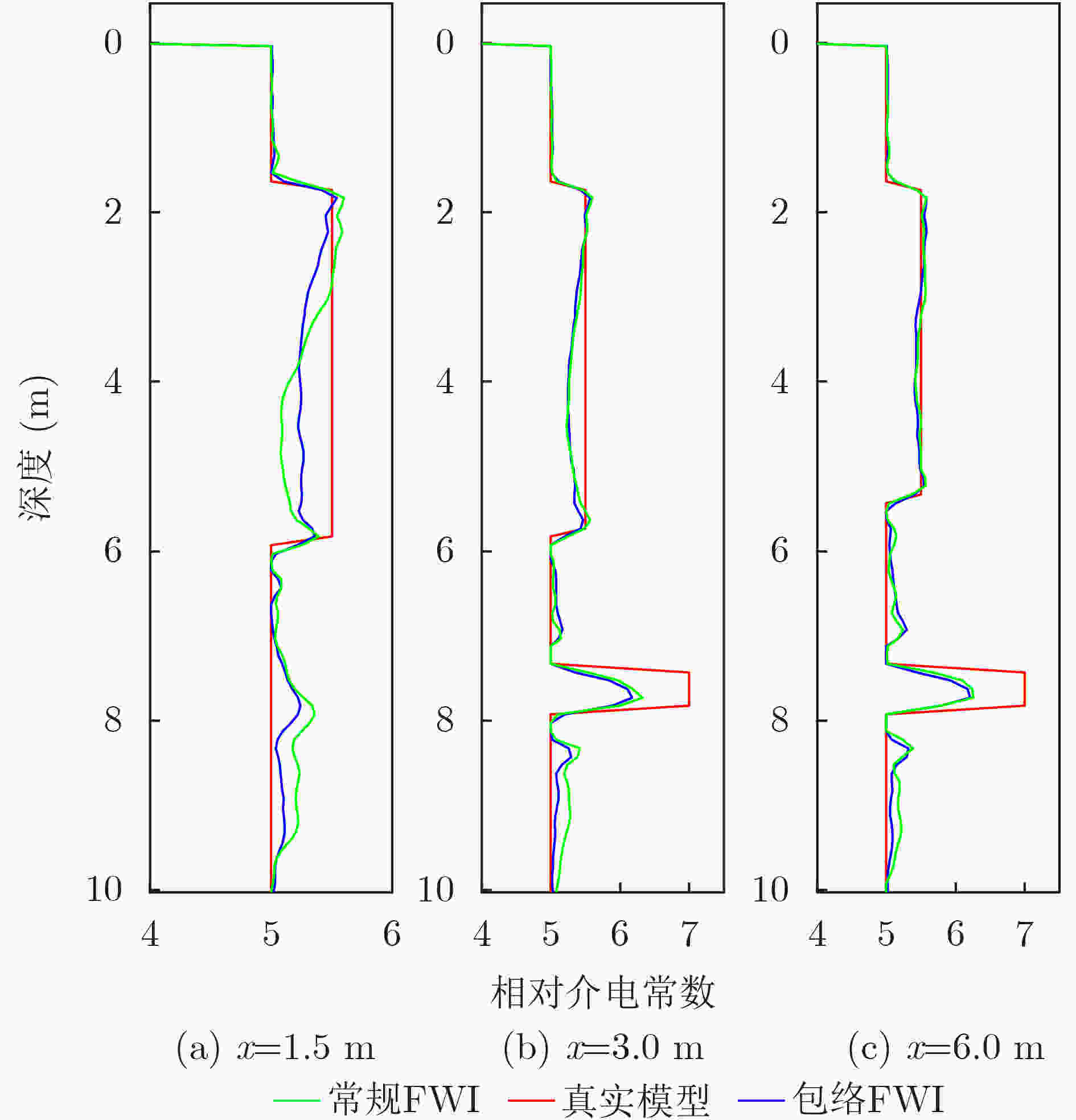| [1] |
KLEWE T, STRANGFELD C, and KRUSCHWITZ S. Review of moisture measurements in civil engineering with ground penetrating radar – applied methods and signal features[J]. Construction and Building Materials, 2021, 278: 122250. doi: 10.1016/j.conbuildmat.2021.122250
|
| [2] |
ŠIPOŠ D and GLEICH D. A lightweight and low-power UAV-borne ground penetrating radar design for landmine detection[J]. Sensors, 2020, 20(8): 2234. doi: 10.3390/s20082234
|
| [3] |
LOOMS M C, JENSEN K H, BINLEY A, et al. Monitoring unsaturated flow and transport using cross-borehole geophysical methods[J]. Vadose Zone Journal, 2008, 7(1): 227–237. doi: 10.2136/vzj2006.0129
|
| [4] |
LINDE N, BINLEY A, TRYGGVASON A, et al. Improved hydrogeophysical characterization using joint inversion of cross-hole electrical resistance and ground-penetrating radar traveltime data[J]. Water Resources Research, 2006, 42(12): W12404. doi: 10.1029/2006WR005131
|
| [5] |
IWASAKI K, TAMURA M, SATO H, et al. Application of ground-penetrating radar and a combined penetrometer-moisture probe for evaluating spatial distribution of soil moisture and soil hardness in coastal and inland windbreaks[J]. Geosciences, 2020, 10(6): 238. doi: 10.3390/geosciences10060238
|
| [6] |
GAO Peng, WANG Ruiyan, ZHAO Gengxing, et al. The application of GPR to the detection of soil wetted bodies formed by drip irrigation[J]. PLoS One, 2020, 15(7): e0235489. doi: 10.1371/journal.pone.0235489
|
| [7] |
CARCIONE J M. Ground radar simulation for archaeological applications[J]. Geophysical Prospecting, 1996, 44(5): 871–888. doi: 10.1111/j.1365-2478.1996.tb00178.x
|
| [8] |
WANG Zhuo, ZENG Zhaofa, and ZHANG Ling. Ground penetrating radar exploration at archaeological site in Shi Village, Xia County, Shanxi Province[C]. The 9th International Conference on Environmental and Engineering Geophysics, Changchun, China, 2020: 012117.
|
| [9] |
JACOB R W, TROP J M, and KOCHEL R G. Subsurface architecture of alpine icy debris fans: Integration of ground-penetrating radar and surface observations in Alaska and New Zealand[J]. Geomorphology, 2021, 375: 107544. doi: 10.1016/j.geomorph.2020.107544
|
| [10] |
DING Chunyu, XIAO Zhiyong, WU Bo, et al. Rock fragments in shallow lunar regolith: Constraints by the lunar penetrating radar onboard the Chang'E-4 mission[J]. Journal of Geophysical Research:Planets, 2021, 126(9): e2021JE006917. doi: 10.1029/2021JE006917
|
| [11] |
GIANNAKIS I, ZHOU Feng, WARREN C, et al. Inferring the shallow layered structure at the Chang’E-4 landing site: A novel interpretation approach using lunar penetrating radar[J]. Geophysical Research Letter, 2021, 48(16): e2021GL092866. doi: 10.1029/2021GL092866
|
| [12] |
LAVOUÉ F, BROSSIER R, MÉTIVIER L, et al. Two-dimensional permittivity and conductivity imaging by full waveform inversion of multioffset GPR data: A frequency-domain quasi-newton approach[J]. Geophysical Journal International, 2014, 197(1): 248–268. doi: 10.1093/gji/ggt528
|
| [13] |
FENG Xuan, REN Qianci, and LIU Cai. Quantitative imaging for civil engineering by joint full waveform inversion of surface-based GPR and shallow seismic reflection data[J]. Construction and Building Materials, 2017, 154: 1173–1182. doi: 10.1016/j.conbuildmat.2017.07.033
|
| [14] |
FENG Xuan, REN Qianci, LIU Cai, et al. Joint acoustic full-waveform inversion of crosshole seismic and ground-penetrating radar data in the frequency domain[J]. Geophysics, 2017, 82(6): H41–H56. doi: 10.1190/geo2016-0008.1
|
| [15] |
FENG Deshan, CAO Cen, and WANG Xun. Multiscale full-waveform dual-parameter inversion based on total variation regularization to on-ground GPR data[J]. IEEE Transactions on Geoscience and Remote Sensing, 2019, 57(11): 9450–9465. doi: 10.1109/TGRS.2019.2926626
|
| [16] |
王珣, 冯德山, 王向宇. 基于改进全变差正则化的GPR多尺度全波形双参数同步反演[J]. 地球物理学报, 2020, 63(12): 4485–4501. doi: 10.6038/cjg2020N0130WANG Xun, FENG Deshan, and WANG Xiangyu. GPR multiple-scale full waveform dual-parameter simultaneous inversion based on modified total variation regularization[J]. Chinese Journal of Geophysics, 2020, 63(12): 4485–4501. doi: 10.6038/cjg2020N0130
|
| [17] |
HUAI Nan, ZENG Zhaofa, LI Jing, et al. Model-based layer stripping FWI with a stepped inversion sequence for GPR data[J]. Geophysical Journal International, 2019, 218(2): 1032–1043. doi: 10.1093/gji/ggz210
|
| [18] |
VIRIEUX J and OPERTO S. An overview of full-waveform inversion in exploration geophysics[J]. Geophysics, 2009, 74(6): WCC1–WCC26. doi: 10.1190/1.3238367
|
| [19] |
BOZDAĞ E, TRAMPERT J, and TROMP J. Misfit functions for full waveform inversion based on instantaneous phase and envelope measurements[J]. Geophysical Journal International, 2011, 185(2): 845–870. doi: 10.1111/j.1365-246X.2011.04970.x
|
| [20] |
CHI Benxin, DONG Liangguo, and LIU Yuzhu. Full waveform inversion based on envelope objective function[C]. The 75th EAGE Conference & Exhibition incorporating SPE EUROPEC 2013, London, UK, 2013: Tu-P04–09.
|
| [21] |
CHI Benxin, DONG Liangguo, and LIU Yuzhu. Full waveform inversion method using envelope objective function without low frequency data[J]. Journal of Applied Geophysics, 2014, 109: 36–46. doi: 10.1016/j.jappgeo.2014.07.010
|
| [22] |
WU Rushan, LUO Jingrui, and WU Bangyu. Ultra-low-frequency information in seismic data and envelope inversion[C]. SEG Technical Program Expanded Abstracts 2013, 2013: 3078–3082.
|
| [23] |
WU Rushan, LUO Jingrui, and WU Bangyu. Seismic envelope inversion and modulation signal model[J]. Geophysics, 2014, 79(3): WA13–WA24. doi: 10.1190/geo2013-0294.1
|
| [24] |
刘新彤, 刘四新, 孟旭, 等. 低频缺失下跨孔雷达包络波形反演[J]. 吉林大学学报:地球科学版, 2018, 48(2): 474–482. doi: 10.13278/j.cnki.jjuese.20170281LIU Xintong, LIU Sixin, MENG Xu, et al. Envelope waveform inversion of cross-hole radar without low frequency data[J]. Journal of Jilin University:Earth Science Edition, 2018, 48(2): 474–482. doi: 10.13278/j.cnki.jjuese.20170281
|
| [25] |
BUNKS C, SALECK F M, ZALESKI S, et al. Multiscale seismic waveform inversion[J]. Geophysics, 1995, 60(5): 1457–1473. doi: 10.1190/1.1443880
|
| [26] |
BOONYASIRIWAT C, VALASEK P, ROUTH P, et al. An efficient multiscale method for time-domain waveform tomography[J]. Geophysics, 2009, 74(6): WCC59–WCC68. doi: 10.1190/1.3151869
|
| [27] |
MELES G A, GREENHALGH S, GREEN A, et al. GPR full-waveform sensitivity and resolution analysis using an FDTD adjoint method[J]. IEEE Transactions on Geoscience and Remote Sensing, 2012, 50(5): 1881–1896. doi: 10.1109/TGRS.2011.2170078
|
| [28] |
LI Jing, BAI Lige, and LIU Hai. Numerical verification of full waveform inversion for the Chang’E-5 lunar regolith penetrating array radar[J]. IEEE Transactions on Geoscience and Remote Sensing, 2022, 60: 5903710. doi: 10.1109/TGRS.2021.3098104
|
| [29] |
PLESSIX R E. A review of the adjoint‐state method for computing the gradient of a functional with geophysical applications[J]. Geophysical Journal International, 2006, 167(2): 495–503. doi: 10.1111/j.1365-246X.2006.02978.x
|
| [30] |
CASTELLANOS C, ETIENNE V, HU Guanghui, et al. Algorithmic and methodological developments towards full waveform inversion in 3D elastic media[C]. SEG Technical Program Expanded Abstracts 2011, 2011: 2793–2798.
|






 下载:
下载:










 下载:
下载:
